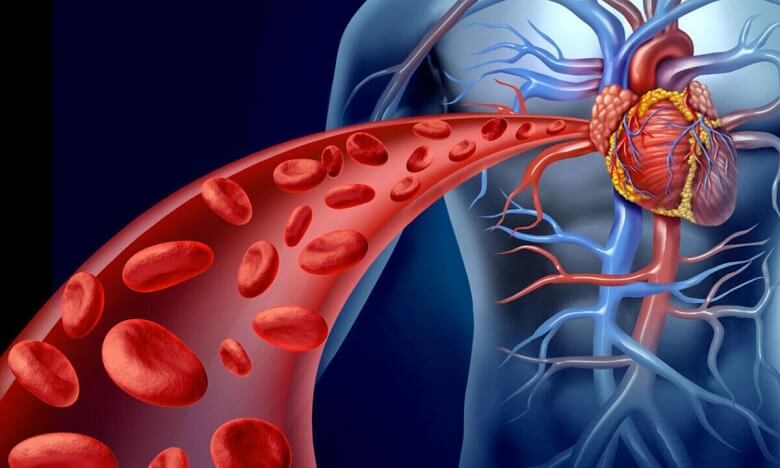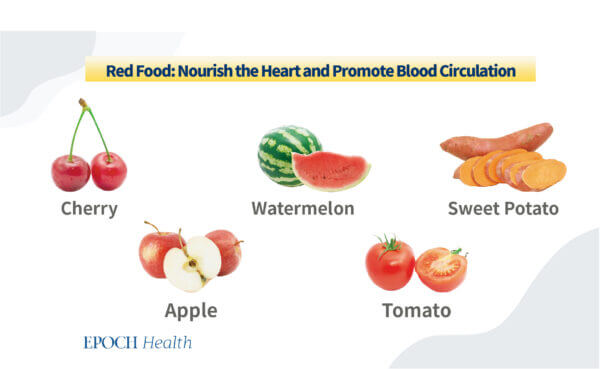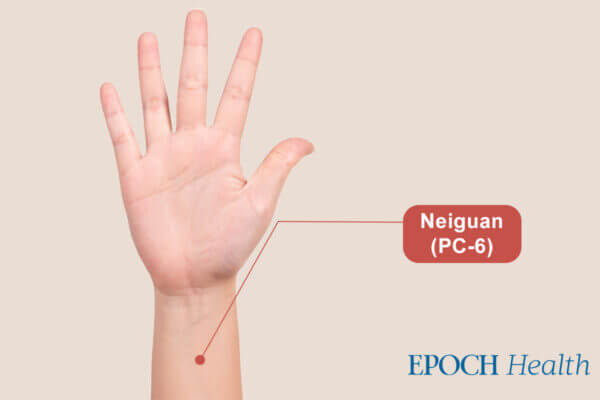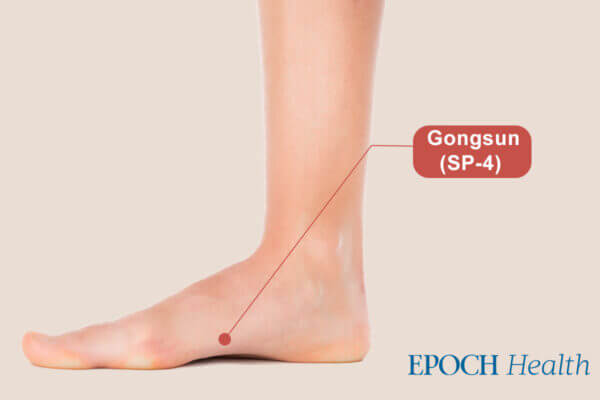
Nourish The Heart & Blood Vessels With These 5 Foods, Plus 2 Cardioprotective Acupoints
You can better protect yourself from heart disease with the help of these foods
By: Naiwen Hu | The Epoch Times
According to the World Health Organization (WHO), cardiovascular disease (CVD) is the leading cause of death worldwide. According to the U.S. Centres for Disease Control and Prevention (CDC), in the United States alone, one person dies from CVD every 33 seconds.
How can traditional Chinese medicine (TCM) nourish the heart, improve circulation, and enhance the functions of the heart, lungs, liver, and kidneys? Let me share some simple yet effective means involving acupoint massage, food therapy, breathing, and exercise.
Your blood vessels may be aging if you experience constant fatigue and stiff shoulders. The stiffer the arteries, the older the blood vessels, and many diseases will follow. If you are over 40, you should know there may also be fat accumulation in the vessels. By 50, blood vessels may already be somewhat clogged. So how do we know whether our blood vessels are aging?
Self-Test For Aging Blood Vessels
If you have all of the following four symptoms, it is likely your coronary arteries are sending out a distress signal, reminding you that your health is becoming worrisome and needs urgent adjustment.
- When walking at a slightly increased pace, you feel out of breath.
- When climbing stairs, you feel out of breath.
- You often feel weakness in your feet and tightness in your chest.
- You have cold hands and feet and even shiver at times.
Food That Nourishes The Heart & The Blood Vessels
Here are several ingredients for nourishing blood vessels, preventing arteriosclerosis, and nourishing the heart, which can be supplemented at any time during your three daily meals.
- Auricularia Auricula: Reduce Blood Lipid
Auricularia auricula, commonly known as wood ear mushroom or jelly ear mushroom, is not only an edible mushroom but also a traditional medicine in China. It is highly valued in Asia and worldwide for its nutritional and healing properties.
Auricularia auricula is known to be rich in polysaccharides, proteins, fats, vitamins, pigments, and trace elements. Among its constituents, Auricularia auricula polysaccharide (AAP) is considered to be the main active ingredient of Auricularia auricula.
In TCM, Auricularia auricula can nourish the blood vessel and improve circulation. It can effectively help reduce thrombus (blood clots), benefit the cardiovascular system, and help reduce the risk of CVD.
Many studies also confirmed that Auricularia auricula is not only highly nutritious but also possesses a wide range of biological activities. According to various reports in the literature, Auricularia auricula has been found to exhibit anticoagulant activity, anti-oxidation, blood lipid reduction, anti-radiation, anti-tumour, and immune-enhancing properties.
- Panax Notoginseng: Prevents Cardiovascular Blockage
Panax notoginseng is a very good TCM anticoagulant. Eating Panax notoginseng often can nourish the cardiovascular system if you’ve had a stroke. According to a report published in Frontiers in Pharmacology in 2016, many studies have proved that Panax notoginseng can offer protection against heart damage. A study published in the Journal of Ethnopharmacology in 2013 also showed that Panax notoginseng has considerable therapeutic potential for myocardial infarction and improving cardiac functionality.
The primary functions of Panax notoginseng:
- Promote new blood formation and help reduce blood stasis.
- Lower cholesterol.
- Prevent cardiovascular sclerosis and blockage.
- Improve blood circulation.
Panax notoginseng is helpful for people with either high or low blood pressure. It is available in Chinese medicine pharmacies, and the store can help grind it into powder for later use. But be careful not to overeat; restrict the dose to a maximum of 3.75 grams (0.13 ounce) daily.
Due to individual-specific circumstances, such medicines for promoting blood circulation and removing blood stasis must be taken under the strict guidance of a TCM practitioner. In particular, people taking anticoagulants must also consult a TCM practitioner before use.
- Red Food: Nourish The Heart & Promote Blood Circulation

In summer, more red food is in season to nourish your heart. For example, choose cherries, red apples, watermelons, red tomatoes, red sweet potatoes, etc.
The Five Elements Theory, TCM’s theoretical foundation, believes that the five elements, wood, fire, earth, metal, and water, correspond to the five internal organs: liver, heart, spleen, lung, and kidneys. Each also corresponds to the five colours: green, red, yellow, white, and black, corresponding to the five tastes: sour, bitter, sweet, spicy, and salty.
TCM believes that the heart corresponds to red, and many red foods can thus help nourish it, promote blood circulation, and reduce the risk of CVD.
The heart corresponds to bitterness, and bitter food can relieve heat generated in it. For example, eating bitter gourd, kale, dandelion, and the like can help eliminate internal heat and nourish the heart.
- Nuts: Lower Blood Lipids
Eating nuts can lower bad cholesterol in the blood. Cholesterol is divided into high-density cholesterol (HDL) and low-density cholesterol (LDL). Most people regard HDL as good, while LDL is bad. Eating nuts can reduce the accumulation of LDL cholesterol in the blood and prevent plaque formation in the cardiovascular system.
Nuts are also rich in vitamin E, which can prevent cell aging and help you avoid heart disease. The suggested daily amount is two to four walnuts or 12 to 15 cashews.
Deep Breathing Strengthens Viscera & Improve Circulation
Practicing slow, deep breathing can help strengthen the heart, cardiovascular system, lungs, liver, and kidneys. The best part about this practice is that it can be done anytime, anywhere.
According to the “Yellow Emperor’s Canon of 81 Difficult Issues” by Bian Que, a great medical practitioner in ancient China, the heart and lungs are at work when we breathe out. When we inhale, it is felt in the liver and kidneys. Deep inhalation is very good for these organs.
If you feel uncomfortable when you inhale, it may be that your liver or kidneys need extra attention. If you are short of breath or you can hear noise when you exhale, it means you aren’t expelling air entirely, meaning you should pay attention to the health of your heart and lungs.
Chest Expansion Exercise Plus Deep Breathing To Enhance Cardiopulmonary Function
Practice about 20 chest expansions daily when you get up or before bed. Combining this with deep breathing can enhance your heart and lung function.
Chest expansion exercises:
- Raise your arms, bent at the elbows, with the palms toward your face and elbows close together.
- While inhaling deeply, expand the chest and slowly open your arms to the sides. Arms should be shoulder-level in a goalpost shape. Hold there for about five seconds.
- While exhaling, let your arms slowly return to the front.
- Inhale to expand the chest, then exhale to close your arms. Repeat this 10 to 20 times.
Hunching Can Cause Cardiopulmonary & Chest Pain
According to the TCM classic “Yellow Emperor’s Canon of Internal Medicine,” hunching your back often will affect your heart and lung function. Hunching your upper body forward overburdens the cervical and thoracic spine. Over time, the space between the thoracic spine’s parts may narrow. When this happens, the spinal nerve becomes squeezed, which causes pain, difficulty breathing, and even affects the stomach.
The Golden Time To Nourish The Heart
TCM talks about “nourishing the heart at noon.” Noon is considered the time between 11:00 a.m. to 1:00 p.m., the prime time for the heart meridian. During this period, if you can sit quietly or close your eyes to rest your mind, you can calm your mind, regulate your energy level, and nourish your mind.
TCM has discovered that the human body has a meridian system, the channel for energy movement responsible for transporting qi and blood around the whole body. These are the basic substances that constitute the body and maintain all physiological activities of human life. There are 12 main meridians in the body, which are connected to the 12 respective viscera, and the 24 hours in a day are divided into 12 hours. At different hours, the qi and blood on the corresponding meridians will be particularly abundant, and the corresponding viscera the most active.
But beware: Exercising after lunch is unsuitable for the blood and heart. Some people are used to taking advantage of the noon break and going to the gym to exercise, such as working up a sweat on the treadmill. This will not only fail to nourish the heart but also hurt it.
2 Cardioprotective Acupoints


There is a saying in TCM: “Neiguan, Gongsun, for the stomach, heart, and chest,” which means pressing Neiguan and Gongsun acupoints together can help treat these body parts. The way to do this is to press the Neiguan acupoint of the left hand with the thumb of the right hand, and at the same time, press the Gongsun acupoint of the right foot with the thumb of the left hand and press gently with both hands.
TCM believes that there are points on the meridians that have special functions. These are called acupoints. Stimulating the corresponding acupoints through acupuncture and massage can treat the diseases of the corresponding viscera.
In fact, pressing the Neiguan acupoint also has an antiemetic effect or stops symptoms of nausea and vomiting. Conversely, if there is stuff in the stomach that you want to get out, you can also induce vomiting by pressing hard on the Neiguan acupoint.
Pregnant women with morning sickness can either press gently on the Neiguan to stop nausea or press hard on the Neiguan to help make them vomit.
* * *
NEXT UP!
Can A Dental Infection Cause A Massive Heart Attack?
For literally hundreds of years now, the idea that a dental infection could seed, initiate, and promote virtually all chronic degenerative diseases has been hotly debated in the medical and dental communities, often with much more passion and hyperbole than with science.
This “debate” continues today, and nothing encapsulates this focal infection link between the mouth and the body better than the root canal-treated tooth. And while the root canal-treated tooth is certainly not the only significant source of dental infection and toxicity, it is easily the most devastating one—as you will soon see.
* * *
READ MORE: What To Eat To Defend Your Heart
Read more on LONGEVITY: Longevity Isn’t Really About Our Genes, Study Reveals
Liked it? Take a second to support Collective Spark.
We’d love to hear from you! If you have a comment about this article or if you have a tip for a future Collective Spark Story please let us know below in the comment section.
